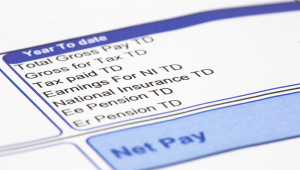
Over the past year, local authorities in the UK have exhibited impressive financial performance in terms of tax collection. In the fiscal year 2022-23, local authorities collected a staggering £36.5bn in council tax, marking a significant £2bn or 5.6% increase from the previous fiscal year. This was primarily driven by increased council tax bills. Furthermore, £35.7bn of the council tax related to 2022-23 was collected by March 2023, reflecting a commendable average in-year collection rate of 96.0%. This represents a 0.2 percentage point increase from the collection rate of 2021-22.
Meanwhile, local authorities also collected £23.4bn in non-domestic rates during the same period, representing a £2.1bn increase from the previous fiscal year. This notable increase can be attributed mainly to higher receipts for 2022-23, although it was partially offset by increased refunds under the Covid Additional Relief Fund (CARF). By March 2023, £24.2bn in non-domestic rates was collected for the fiscal year, showcasing an average in-year collection rate of 96.8% - a substantial 1.3 percentage point increase from 2021-22.
Yet, despite these successes, potential risks are looming on the horizon that may challenge these triumphant figures. As of 31 March 2023, the outstanding council tax amounted to a considerable £5.5bn, reflecting a £510m increase from the end of 2021-22. Simultaneously, the total amount of non-domestic rates outstanding as of the same date was £2.5bn, a marginal decrease of £99m from the figure at the end of the previous fiscal year.
While increased council tax bills drove up the tax collection in 2022-23, this trend, if sustained, could pose a significant risk to future collection rates. Higher tax bills may trigger increased resistance from taxpayers, potentially resulting in lower collection rates in the coming fiscal years. Similarly, in-year collection rate fluctuations could impact overall tax collection due to factors such as changing economic conditions, shifts in taxpayer behaviour, and variations in local authority collection efforts.
Of further concern is the growing amount of outstanding council tax. The accumulated £5.5bn represents a significant amount of unpaid tax, thereby posing a risk to future collection efforts. Increasing unpaid tax could exert additional pressure on local authorities to recover these amounts, potentially undermining their focus on strategic issues.
Moreover, increased refunds under CARF have partially offset the increase in non-domestic rates. Additional adjustments to relief programs, business closures, or policy shifts could potentially influence the amount of refunds and impact collection rates.
On a broader scale, the government seems inclined towards delaying debt recovery or leaning towards smart write-offs, as opposed to aggressive debt collection approaches. As we move forward in these uncertain economic times, propensity-to-pay exercises are expected to be used to identify households experiencing financial difficulties. Councils may need to adopt a more nuanced approach to debt prioritisation, considering the financial realities faced by middle-class families in crisis, rather than simply focusing on traditional debt recovery models.
Maintaining high collection rates could prove challenging, particularly given the current policy context. Local tax collection is likely to emerge as a priority for council treasurers trying to close budget gaps, especially in an environment where central government may be encouraging financial services to forego debt collection until interest rates are under control. Estimates indicate this may not occur until 2027, despite government optimism for resolution by year-end.
Moreover, efforts to control interest rates may include further restrictions on council tax increases for 2023-24. While schemes to manage the impact of interest rate rises are voluntary for the financial sector, local government does not have this luxury. As we navigate these turbulent economic waters, it will be essential for local authorities to think strategically about balancing the risks and rewards of tax collection, considering both the needs of their constituencies and the realities of their budgets.
In conclusion, while the success of tax collection in the fiscal year 2022-23 is commendable, it is crucial for local authorities and the government to anticipate potential risks, proactively manage outstanding debt, and ensure a robust, fair, and sustainable system of tax collection in the years to come.












